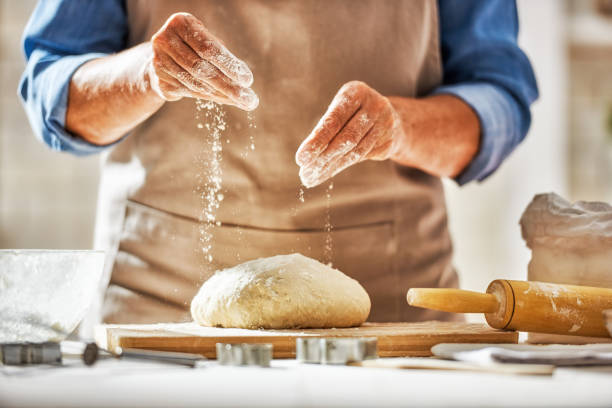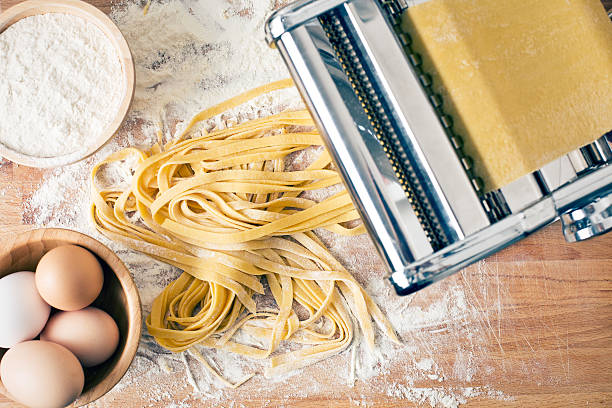Lots of useful tips for making pasta dough and making pasta yourself. With instructions on how to make your own pasta. Now conjure up your own pasta with your own homemade pasta dough.
Just make your own noodles
They are on everyone’s lips and almost everyone knows them: pasta. They are among the most popular side dishes and simply make connoisseurs happy. Noodles can be prepared quickly and are a taste experience in salty and sweet forms. We usually enjoy industrially produced pasta. Fresh pasta that tastes like it was made by mom or grandma is rare. Freshly made noodles are sold commercially as a delicacy. The price is correspondingly high. But making pasta yourself is not rocket science. With a little patience and practice, anyone can make their own delicious pasta dough.
The ingredients for the pasta dough

For a good pasta dough weighing approx. 550 g, the following ingredients should be ready.
- 300gr wheat flour type 405
- 200gr durum wheat semolina
- 6 egg yolks
- 1 egg
- 2 teaspoons oil
- 3 tablespoons of water
- and a pinch of salt
This amount makes about four servings when cooked.
The tool for making pasta yourself:
For kitchen tools we need:
- a cooking spoon
- a large mixing bowl
- a teaspoon
- and a tablespoon
The steps of the DIY pasta
Place the flour and semolina in a mixing bowl. Make a small well in the middle of the mixture with your hands and pour in the yolks and the whole egg.
Now add the oil and salt. If you are not afraid of raw eggs in the dough and thus of salmonella poisoning, you can try the raw dough and possibly spice it up a little to taste. Since the noodles will later be cooked in saltwater, the seasoning should not be overdone. Finally, add the water to the dough. Muscle strength is required now. The dough must be kneaded for at least a quarter of an hour. The dough is good when it rolls smoothly into a ball and doesn’t crumble.
If despite all caution, it crumbles, a tablespoon of water and a few drops of cooking oil can quickly restore the elasticity of the dough.
When the dough is well wrapped in cling film and has been flattened with muscle power, it can be placed in the fridge and left to rest for about half an hour. The break should really be observed. If the dough is not really cool, it can become sticky and processing with a great result is not possible.
The processing of the pasta dough
After the dough has rested in the refrigerator and is now back on the work surface, further processing depends on which pasta is to be made.
Cannelloni: For cannelloni, the dough must be rolled out extremely thinly on a floured work surface. If you want to save flour, you can try rolling it out on baking paper or a silicone mat. Then cut the thin dough into squares and shape it into small rolls. There are various ideas for tasty fillings on the Internet.
Ribbon noodles: For ribbon noodles, roll out the dough wafer-thin and then cut into thin strips with a sharp knife. It is important: Dust the dough well with flour and not place the cut noodles on top of each other.
The dough should be wafer-thin because the eggs it contains give the dough a powerful lift. Even if the batter is so thin that we can almost see through it, it can still be too thick for certain pasta dishes.

No matter which pasta dish you choose, the basic pasta dough mentioned above is suitable for all pasta shapes.
The preparation of the noodles
Last but not least, tips for cooking pasta should be observed. So let the noodles cook in a pot of boiling water for about three to four minutes. Add a teaspoon of salt to the cooking water. Please no oil in the water. The oil in the cooking water closes the pores of the pasta. You can therefore no longer absorb sauces on the plate.
